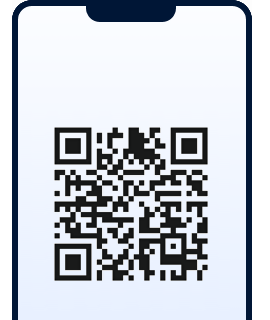New FAQ Page 2 - આરબીઆઈ - Reserve Bank of India
 IST,
IST,
National Electronic Funds Transfer (NEFT) System
Ans: Indian Financial System Code (IFSC) is an alpha-numeric code that uniquely identifies a bank-branch participating in the NEFT system. It is a 11-digit code with the first 4 alpha characters representing the bank, and the last 6 characters representing the branch. The 5th character is 0 (zero). IFSC is used by the NEFT system to identify the originating / destination banks / branches and also to route the messages appropriately to the concerned banks / branches.
Ans: Bank-wise list of IFSCs is available with all the bank-branches participating in NEFT scheme. List of bank-wise branches participating in NEFT and their IFSCs is also available on the website of RBI at /en/web/rbi/-/list-of-neft-enabled-bank-branches-bank-wise-indian-financial-system-code-updated-as-on-june-30-2023-2009-1. All member banks have also been advised to print the IFSC of the branch on cheques issued to their customers.
Ans: No, there is no limit imposed by the RBI for funds transfer through NEFT system. However, a member bank may place amount limits based on its own risk perception with the approval of its Board.
Ans: The NEFT system is available round the clock throughout the year on all days, i.e., on 24x7x365 basis. NEFT presently operates in batches on half-hourly intervals throughout the day. In case of non-availability of NEFT for any reason, appropriate message will be broadcasted by RBI to all system participants.
Ans: The essential elements of beneficiary's identification are:
Beneficiary's Name
Beneficiary's Branch Name
Beneficiary's Bank Name
Beneficiary's Account Type
Beneficiary's Account No.
Beneficiary's Branch IFSC
Sender and Beneficiary Legal Entity Identifier (for eligible transactions)
Ans: There are no charges to be levied for inward transactions at destination bank branches for giving credit to beneficiary accounts.
For outward transactions undertaken using the NEFT system, RBI stopped levying processing charges on member banks from July 01, 2019.
Also, in order to give further impetus to digital retail payments, banks have been advised to not levy any charges from their savings bank account holders for NEFT funds transfers initiated online with effect from January 01, 2020.
The maximum charges which originating bank can be levy from its customers for other outward transactions, if they so desire, are given below: –
- For transactions up to ₹10,000 : not exceeding ₹2.50 (+ Applicable GST)
- For transactions above ₹10,000 up to ₹1 lakh: not exceeding ₹5 (+ Applicable GST)
- For transactions above ₹1 lakh and up to ₹2 lakhs: not exceeding ₹15 (+ Applicable GST)
- For transactions above ₹2 lakhs: not exceeding ₹25 (+ Applicable GST)
The details about charges applicable for transferring funds from India to Nepal using the NEFT system under the INRF Scheme is available on the RBI website at /en/web/rbi/faq-page-2?ddm__keyword__26256231__FaqDetailPage2Title_en_US=Indo-Nepal Remittance Facility scheme.
Ans: No. NEFT is a credit-push system i.e., transactions can be originated by the payer / remitter / sender only to pay / transfer / remit funds to beneficiary.
Ans: The remitter and the beneficiary can track status of NEFT transaction by contacting NEFT Customer Facilitation Centre (CFC) of their bank, respectively. Details of NEFT CFCs of banks are available on the websites of the respective banks. The details of CFC of member banks are also available on the website of RBI at /en/web/rbi/-/customer-facilitation-centres-neft-updated-as-on-june-16-2023-2070-1.
For the purpose of faster tracking of transaction, you may need to provide few details related to transaction such as Unique Transaction Reference (UTR) number / transaction reference number, date of transaction, sender IFSC, amount, beneficiary name, beneficiary IFSC, etc., to your bank.
Ans: After crediting the account of the beneficiary, the beneficiary bank shall advise the beneficiary of the funds received. The remitter’s name shall be printed in the Account Statement / Pass Book of the beneficiary.
There is an optional field with tag 7495 in NEFT payment message that enables inclusion of additional sender-to-receiver information. Destination banks should capture and store this information in their CBS / other systems as appropriate, to be provided to the customer on request.
If the beneficiary specified in the sender's payment instruction fails to get payment through the NEFT system for some valid reasons, the originating bank shall provide the description “NEFT-Return” in the pass book / account statement of the originator whose NEFT transaction is returned.
Ans: The NEFT Help Desk / Contact point of the RBI can be approached at nefthelpdeskncc@rbi.org.in.
પેજની છેલ્લી અપડેટની તારીખ: null
પેજની છેલ્લી અપડેટની તારીખ: null











